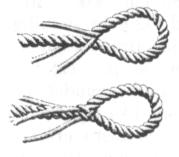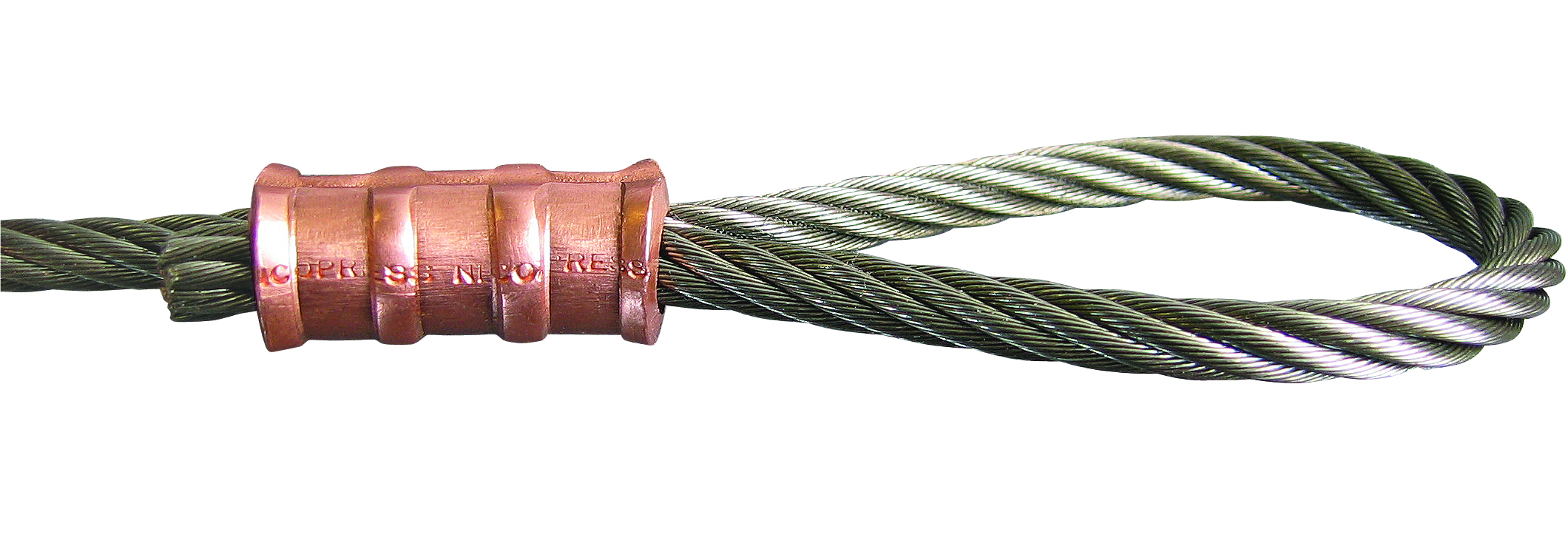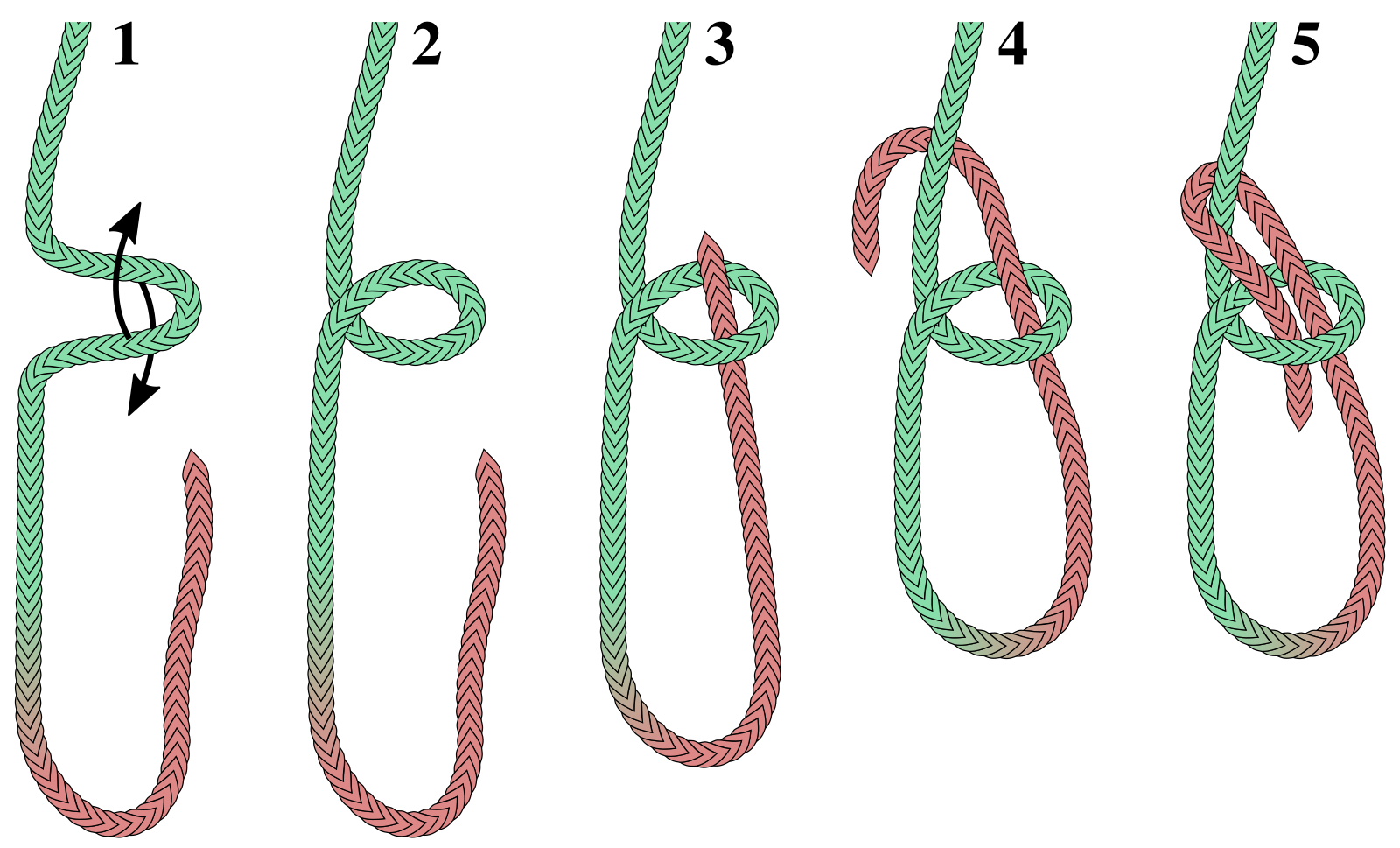|
Eye Splice
The eye splice is a method of creating a permanent loop (an " eye") in the end of a rope by means of rope splicing. The Flemish eye is a type of circular loop at the end of a thread. There are several techniques of creating the eye with its knot tied back to the line, rope or wire. Techniques There are various splicing techniques, and relate to whether a rope is braided or plaited, whether it has a core and whether the core is made of high-performance fibers. Techniques include: * Eye splice in three-strand rope * Eye splice in eight-strand rope * Eye splice in single braided (hollow braid) rope * Eye splice in double braided rope with polyester or nylon fiber core * Eye splice in rope with braided cover and a laid core * Eyes splice in rope with braided cover and parallel fibers in the core * Eye splice in double braided rope with a high-performance fiber core (e.g. Dyneema, Vectran) In three-strand rope For conventional stranded ropes, the ends of the rope are tuck ... [...More Info...] [...Related Items...] OR: [Wikipedia] [Google] [Baidu] |
Whipping Knot
A whipping knot or whipping is a binding of twine or whipcord around the end of a rope to prevent its natural tendency to fray. Some whippings are finished cleanly, as by drawing the bitter end of the cordage beneath the whipping itself. Others are tied off or have the end(s) of the twine sewn through the rope. According to ''The Ashley Book of Knots'', "The purpose of a ''whipping'' is to prevent the end of a rope from fraying ... A whipping should be, in width, about equal to the diameter of the rope on which it is put ... wo sailmaker's whippings a short distance apart, are put in the ends of every reef point, where the constant "whipping" against the sail makes the wear excessive; this is said to be the source of the name ''whipping''."Ashley, Clifford W. (1944). ''The Ashley Book of Knots'', p.547. Doubleday. . The other type of stopping knot is a seizing knot. Whipping is suitable for synthetic and natural stranded and braided lines, including 3-strand rope, 4-strand ... [...More Info...] [...Related Items...] OR: [Wikipedia] [Google] [Baidu] |
Swaged Sleeve
A swaged sleeve is a connector that gets crimped using a hand tool and die ( swaged). This type of compressed sleeve is commonly used to make mechanical or conductive connections. These sleeves join or terminate wire rope, aircraft cable, synthetic cable, fibrous rope, or electrical conductor In physics and electrical engineering, a conductor is an object or type of material that allows the flow of charge (electric current) in one or more directions. Materials made of metal are common electrical conductors. Electric current is gene ... cables. Oval swaged sleeve When properly applied to 7×7, 7×19 or 6×19 IWRC classification wire rope, the eye-splice configuration termination provides a secured connection equal to the breaking strength of the wire rope. The product was originally developed for the US Military, patented in 1942 and currently used in a wide range of applications and industries including: aerospace, defense, marine, material handling, and structural applica ... [...More Info...] [...Related Items...] OR: [Wikipedia] [Google] [Baidu] |
List Of Knots
This list of knots includes many alternative names for common knots and lashings. Knot names have evolved over time, and there are many conflicting or confusing naming issues. The overhand knot, for example, is also known as the thumb knot. The figure-eight knot is also known as the Savoy knot or the Flemish knot. A * Adjustable Bend – can be easily lengthened or shortened * Adjustable Grip Hitch – a simple hitch which may easily be shifted up and down the rope while slack *Albright Special – used to tie two different diameters of line together, for instance to tie monofilament to braid *Alpine Butterfly (also known as Butterfly Loop) – a static loop mostly used by mountain climbers and rappellers for securing a carabiner to static rope. * Alternate Ring Hitching – covering a ring in hitching can prevent damage * Anchor Bend – attaching a rope to a ring or similar termination *Angler's Loop – knot which forms a fixed loop. Useful for fine or slippery line, it is ... [...More Info...] [...Related Items...] OR: [Wikipedia] [Google] [Baidu] |
Bowline
The bowline ( or ) is an ancient and simple knot used to form a fixed loop at the end of a rope. It has the virtues of being both easy to tie and untie; most notably, it is easy to untie after being subjected to a load. The bowline is sometimes referred to as ''King of the knots'' because of its importance. Along with the sheet bend and the clove hitch, the bowline is often considered one of the most essential knots. The common bowline shares some structural similarity with the sheet bend. Virtually all end-to-end joining knots (i.e., bends) have a corresponding loop knot. Although the bowline is generally considered a reliable knot, its main deficiencies are a tendency to work loose when not under load (or under cyclic loading), to slip when pulled sideways, and the bight portion of the knot to capsize in certain circumstances. To address these shortcomings, a number of more secure variations of the bowline have been developed for use in safety-critical applications, or by s ... [...More Info...] [...Related Items...] OR: [Wikipedia] [Google] [Baidu] |
Kevlar
Kevlar (para-aramid) is a strong, heat-resistant synthetic fiber, related to other aramids such as Nomex and Technora. Developed by Stephanie Kwolek at DuPont in 1965, the high-strength material was first used commercially in the early 1970s as a replacement for steel in racing tires. It is typically spun into ropes or fabric sheets that can be used as such, or as an ingredient in composite material components. Kevlar has many applications, ranging from bicycle tires and racing sails to bulletproof vests, all due to its high tensile strength-to-weight ratio; by this measure it is five times stronger than steel. It is also used to make modern marching drumheads that withstand high impact; and for mooring lines and other underwater applications. A similar fiber called Twaron with the same chemical structure was developed by Akzo in the 1970s; commercial production started in 1986, and Twaron is now manufactured by Teijin. History Poly-paraphenylene terephthalamide (K2 ... [...More Info...] [...Related Items...] OR: [Wikipedia] [Google] [Baidu] |
Ultraviolet
Ultraviolet (UV) is a form of electromagnetic radiation with wavelength from 10 nanometer, nm (with a corresponding frequency around 30 Hertz, PHz) to 400 nm (750 Hertz, THz), shorter than that of visible light, but longer than X-rays. UV radiation is present in sunlight, and constitutes about 10% of the total electromagnetic radiation output from the Sun. It is also produced by electric arcs and specialized lights, such as mercury-vapor lamps, tanning lamps, and black lights. Although long-wavelength ultraviolet is not considered an ionizing radiation because its photons lack the energy to ionization, ionize atoms, it can cause chemical reactions and causes many substances to glow or fluorescence, fluoresce. Consequently, the chemical and biological effects of UV are greater than simple heating effects, and many practical applications of UV radiation derive from its interactions with organic molecules. Short-wave ultraviolet light damages DNA and sterilizes surf ... [...More Info...] [...Related Items...] OR: [Wikipedia] [Google] [Baidu] |
Aramid
Aramid fibers, short for aromatic polyamide, are a class of heat-resistant and strong synthetic fibers. They are used in aerospace and military applications, for ballistic-rated body armor fabric and ballistic composites, in marine cordage, marine hull reinforcement, and as an asbestos substitute. The chain molecules in the fibers are highly oriented along the fiber axis. As a result, a higher proportion of the chemical bond contributes more to fiber strength than in many other synthetic fibers. Aramids have a very high melting point (>500 °C). Common aramid brand names include Kevlar, Nomex, and Twaron. Terminology and chemical structure ''Aramid'' is a shortened form of aromatic polyamide. The term was introduced in 1972, accepted in 1974 by the Federal Trade Commission of the USA as the name of a generic category of fiber distinct from nylon, and adopted by the International Standards Organisation in 1977. Aromatic in the name refers to the presence of aromatic rings ... [...More Info...] [...Related Items...] OR: [Wikipedia] [Google] [Baidu] |
DSM (company)
Koninklijke DSM N.V. (Royal DSM, commonly known as DSM), is a Dutch multinational corporation active in the fields of health, nutrition and materials. Headquartered in Heerlen, at the end of 2017 DSM employed 21,054 people in approximately 50 countries and posted net sales of €8.632 billion in 2018 and €9.204 billion in 2021. History DSM was formed by the Dutch state in 1902 to mine coal reserves in southern Limburg and although the company had diversified into commodity chemicals and petrochemicals by 1973 when the last mine closed, DSM retains a link to its origins by continuing to use the initials, originally an abbreviation for Dutch State Mines, to this day. During World War II researchers worked on penicillin. The code name Bacinol was used to keep the research secret from the Germans. The research was done at the company Nederlandsche Gist- en Spiritusfabriek, Dutch Yeast and Spirits Factory, later becoming DSM Sinochem Pharmaceuticals, in Delft. In 1989 the gover ... [...More Info...] [...Related Items...] OR: [Wikipedia] [Google] [Baidu] |
Dyneema
Ultra-high-molecular-weight polyethylene (UHMWPE, UHMW) is a subset of the thermoplastic polyethylene. Also known as high-modulus polyethylene, (HMPE), it has extremely long chains, with a molecular mass usually between 3.5 and 7.5 million amu. The longer chain serves to transfer load more effectively to the polymer backbone by strengthening intermolecular interactions. This results in a very tough material, with the highest impact strength of any thermoplastic presently made. UHMWPE is odorless, tasteless, and nontoxic. It embodies all the characteristics of high-density polyethylene (HDPE) with the added traits of being resistant to concentrated acids and alkalis, as well as numerous organic solvents. It is highly resistant to corrosive chemicals except oxidizing acids; has extremely low moisture absorption and a very low coefficient of friction; is self-lubricating (see boundary lubrication); and is highly resistant to abrasion, in some forms being 15 times more resistant t ... [...More Info...] [...Related Items...] OR: [Wikipedia] [Google] [Baidu] |
Marlinspike
A marlinspike (, sometimes spelled marlin spike, marlinespike, or rchaicmarlingspike) is a tool used in marine ropework. Shaped in the form of a polished metal cone tapered to a rounded or flattened point, it is used in such tasks as unlaying rope for splicing, untying knots, drawing marline tight using a marlinspike hitch, and as a toggle joining ropes under tension in a belaying pin splice. Marlinspikes are usually about long, but may reach or more when used for working heavy cables and ropes. They are usually made from iron or steel, whereas fids, similar in shape and function, are formed from wood or bone. The marlinspike may be a separate tool or one item on a pocket knife. Sailors who become proficient at knot tying, splicing, and sewing using the marlinspike are said to have mastered marlinespike seamanship, earning them the right to be known as ''marlin spikes'' or ''marlinspike seamen''. Uses Marlinspikes are used: * As levers to open strands of laid rope w ... [...More Info...] [...Related Items...] OR: [Wikipedia] [Google] [Baidu] |
Eye Splice
The eye splice is a method of creating a permanent loop (an " eye") in the end of a rope by means of rope splicing. The Flemish eye is a type of circular loop at the end of a thread. There are several techniques of creating the eye with its knot tied back to the line, rope or wire. Techniques There are various splicing techniques, and relate to whether a rope is braided or plaited, whether it has a core and whether the core is made of high-performance fibers. Techniques include: * Eye splice in three-strand rope * Eye splice in eight-strand rope * Eye splice in single braided (hollow braid) rope * Eye splice in double braided rope with polyester or nylon fiber core * Eye splice in rope with braided cover and a laid core * Eyes splice in rope with braided cover and parallel fibers in the core * Eye splice in double braided rope with a high-performance fiber core (e.g. Dyneema, Vectran) In three-strand rope For conventional stranded ropes, the ends of the rope are tuck ... [...More Info...] [...Related Items...] OR: [Wikipedia] [Google] [Baidu] |





